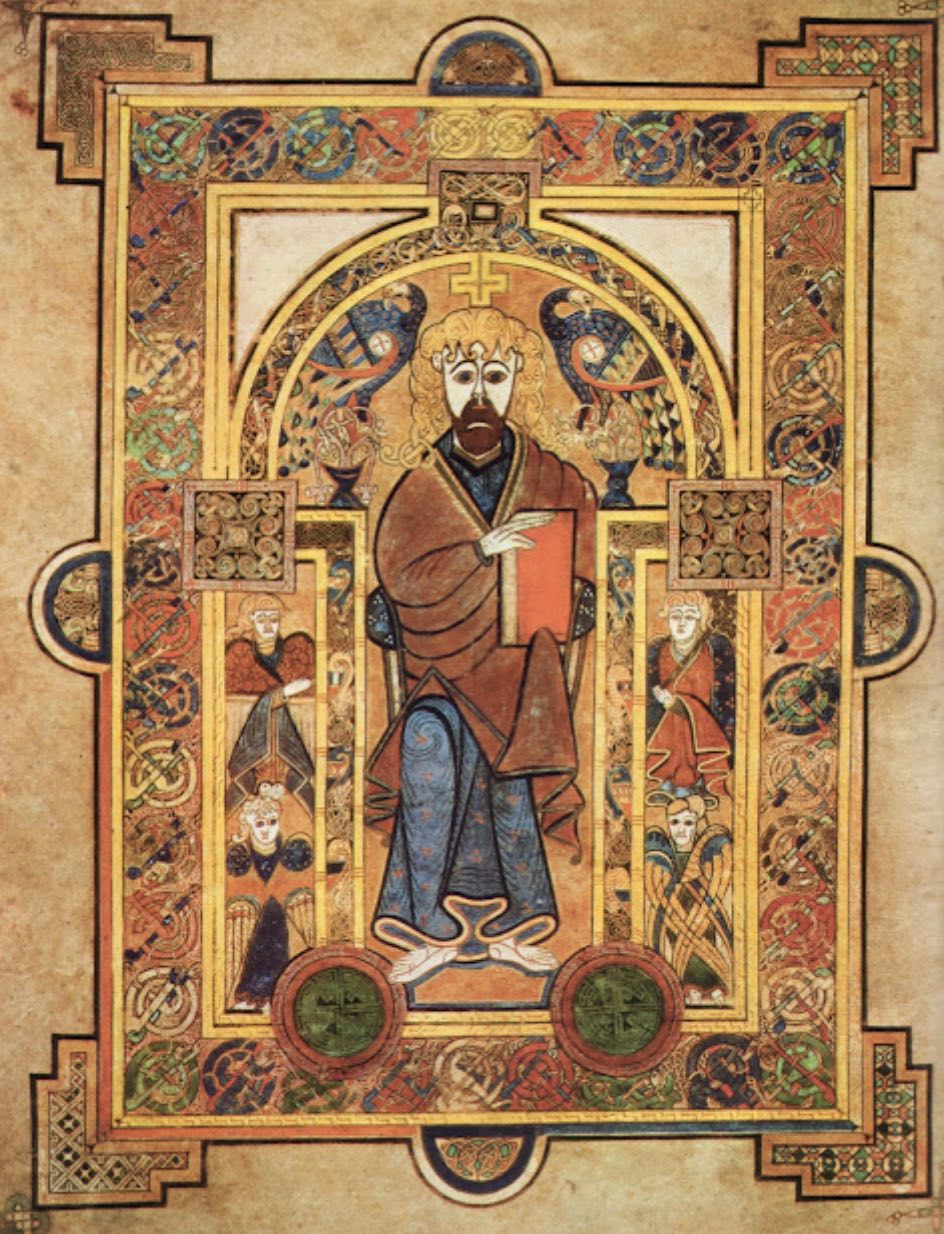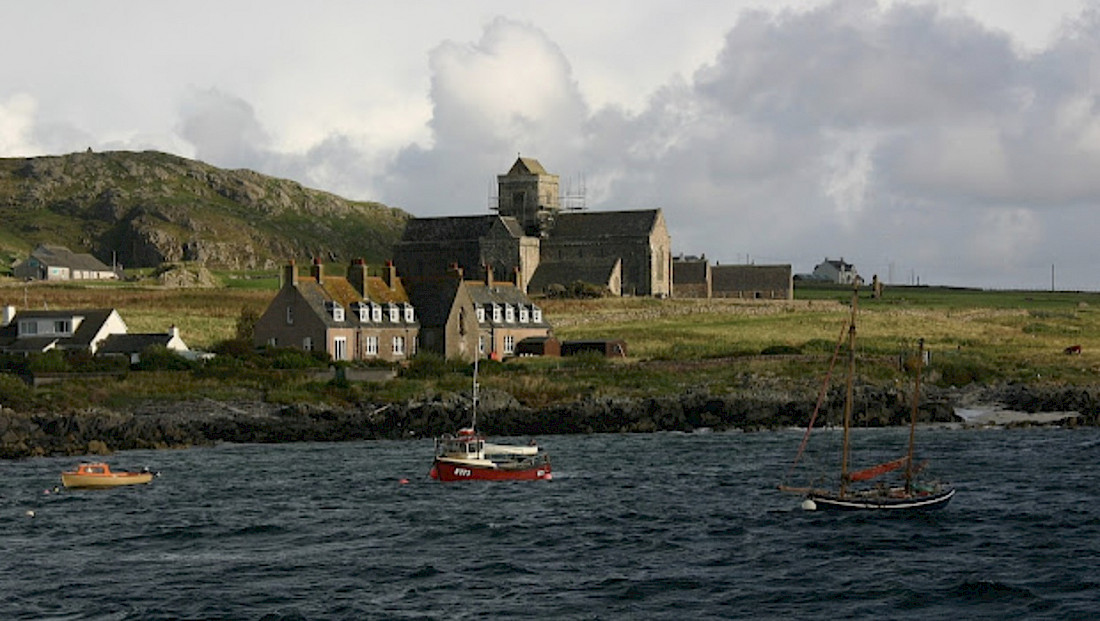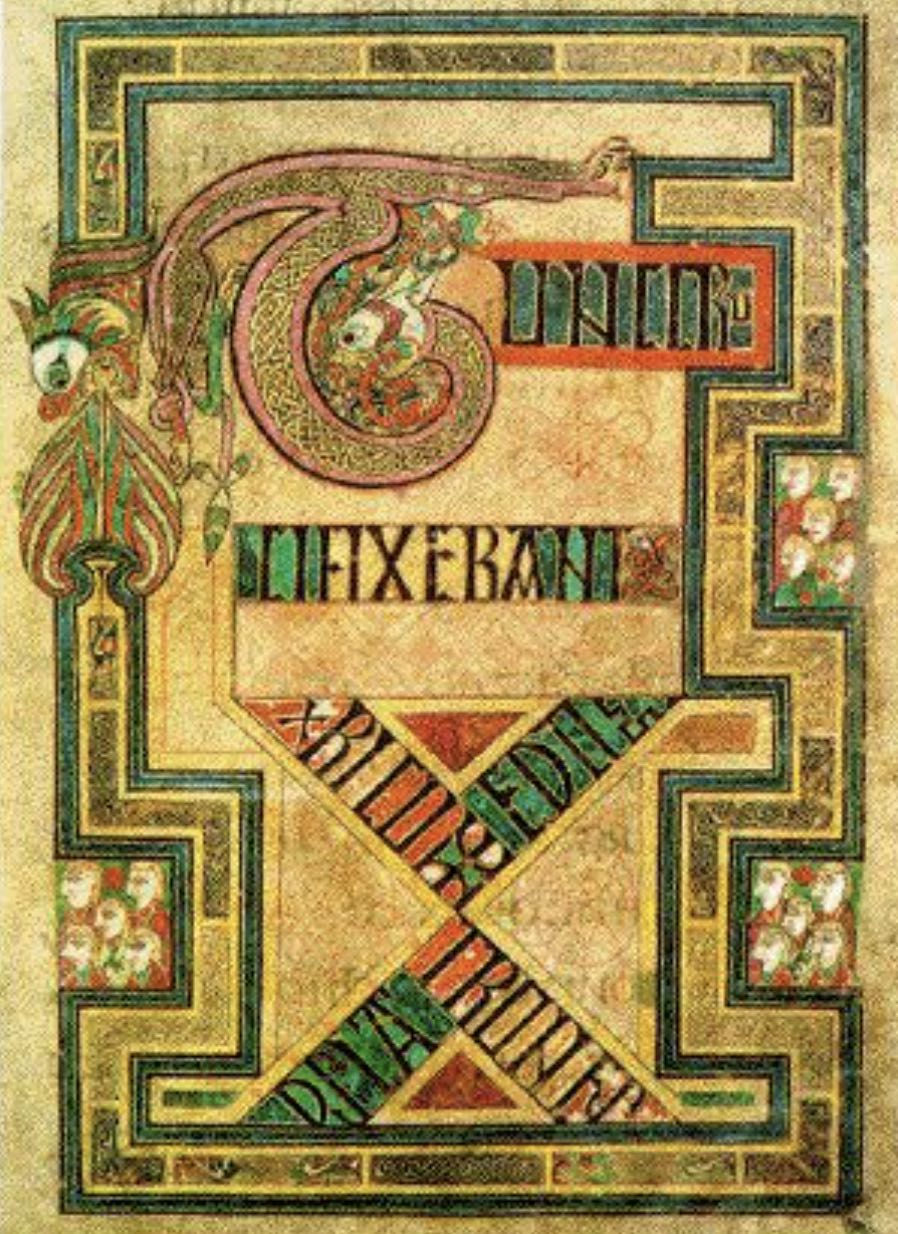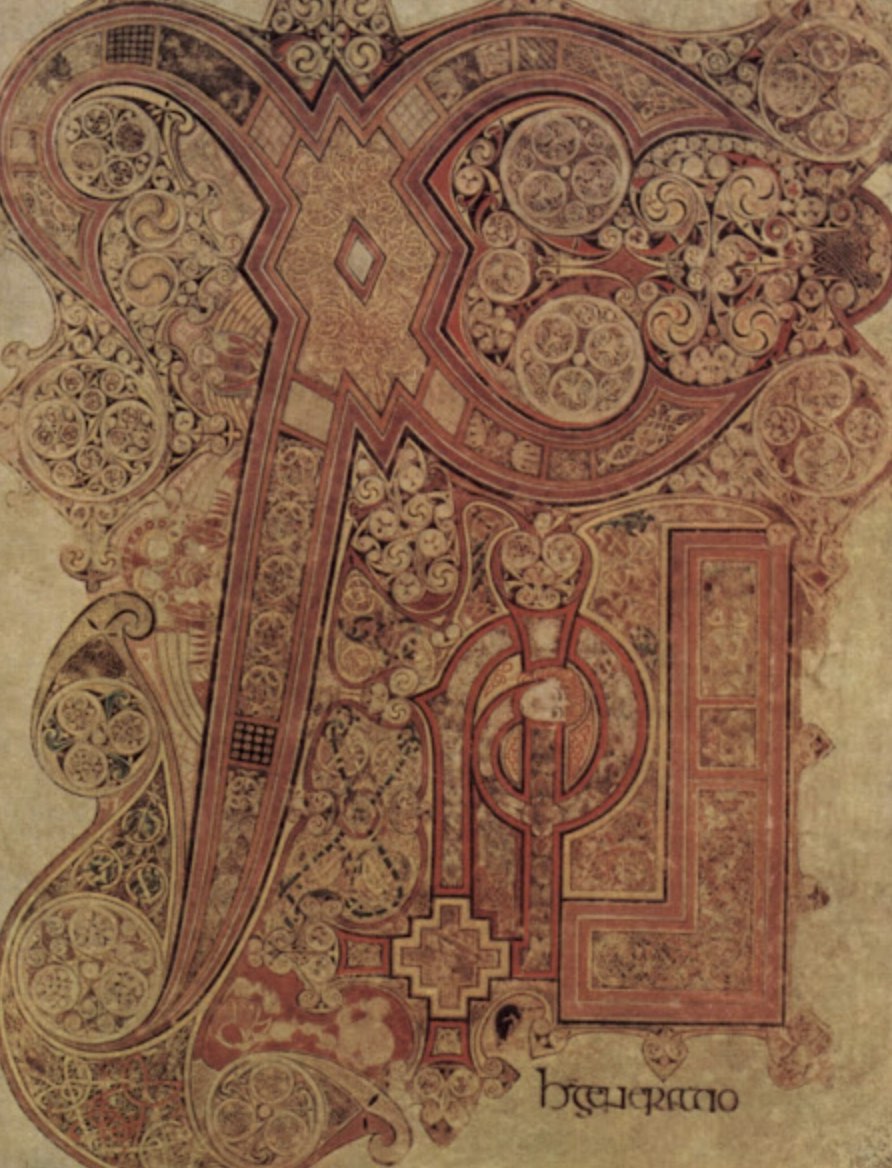The Book of Kells
The Book of Kells - The World’s Most Famous Medieval Illuminated Book
Among its many nicknames, Ireland is sometimes called the “Land of Saints and Scholars,” because of the role this island’s monasteries played in preserving faith and classical knowledge during Europe’s dark age. While barbarian tribes were looting cities throughout Europe and burning books, Irish monks began to preserve the wisdom of classical Western civilization by copying as much literature as they could. Ireland’s gift to the world and one of the most amazing examples of a medieval illuminated manuscript is the Book of Kells.

What is an Illuminated Manuscript?
Before the invention of printing presses, books had to be copied by hand, with each word painstakingly written in ink with a quill pen made from a goose or swan feather. Monks copied books mainly for worship although some were commissioned by Kings and Nobles. One monk might be the scribe, another the illustrator, and another the illuminator, and, sometimes one monk did all three processes. The miniature paintings were an important guide because, at this time, most people couldn’t read.
The books that the monks created were not just works of scholarship written in ink, they were also works of art. The manuscripts were made of either vellum which is calf skin or parchment which is sheep or goat skin, not paper. The skin was stretched, scraped, and whitened with chalk to create a clean, bright, smooth surface to write and draw on. Monasteries kept herds of cows and calves for this reason.
Medieval manuscript decoration is referred to as illuminated, which was taken from Latin to mean “lighted up.” For a manuscript to be illumined it was decorated with gold and silver leaf. Sometimes semi-precious stones, including lapis lazuli, were used giving the manuscript an opulent bejeweled appearance. The manuscript would be decorated with small painted scenes, called miniatures, gilded with gold, and silver leaf, and embellished with crushed semi-precious gems, elaborate borders, and intricate chapter letters. The completed manuscript was then sewn together and bound between two covers that could be leather or wood, or hammered silver or gold and decorated with embedded precious stones.

Iona - Where it All Began
Researchers believe that the Book of Kells was crafted around 800 AD by Celtic monks in the Columban Monastery on the wind-battered Scottish island of Iona. The monastery was founded in the 6th century by Saint Columba or Colmcille in Irish, who is revered as one of Ireland’s three patron saints. It is said that Saint Columba took 12 monks with him to this remote island, still considered a holy island, because it is the birthplace of Scottish Christianity. Today, it remains a popular place of pilgrimage.
It is hard to believe that with so little, these monks were able to create a beautiful illuminated manuscript on this bleak and remote island. In addition to a spartan way of life and frequent storms, the monks had to face another danger, Viking raids. After the catastrophic Viking raid in 806 AD, that left 68 of the community dead, surviving Columban monks fled to the monastery at Kells in County Meath in Ireland, founded by Saint Columba. Experts believe that the monks took the manuscript with them to Kells where it was completed.

What is The Book of Kells?
Written in Latin, this illuminated religious manuscript dates to the medieval period and contains the four Gospels of the New Testament, drawn from Saint Jerome’s Vulgate texts completed in 384 AD. It includes the complete Gospels of Matthew, Mark, and Luke. Only part of John’s survives. It is the only illuminated manuscript remaining that is done in the insular style, exemplified by elaborate initial letters that are decorated with interlace and zoomorphic designs, and smaller initials embellished with red dots. It is written in a style called Hiberno-Saxon which is a blend of Irish-Celtic and Anglo-Saxon. This can be seen in the curvilinear motifs and initialing common in the Irish-Celtic tradition while the Anglo-Saxon influence is clear in the manuscript’s animals and vivid colors.
Written on vellum, it is estimated that the skins of 185 calves were needed to complete this masterpiece, with most of its 680 pages decorated. It is 13 inches wide and ten inches high and contains 340 folios. Experts believe 30 folios were lost or stolen. In 1007, the cover was stolen which was made of gold and precious jewels. Unfortunately, in the 19th century, the book was trimmed back by bookbinders, making it slightly smaller. In 1953, the book was once again rebound for preservation purposes, creating four volumes of which two are on permanent display.

Symbolism in a Nutshell
Evidence suggests that The Book of Kells was made for display, not ceremonial use in church services because of its magnificent artwork. While the illustrations are superb, there is a repetition of words and paragraphs with no effort to correct these mistakes. The artwork took precedence over the text.
Its clever use of symbolism tells the story of Christianity through decorative illustrations. Almost every page has different designs and symbols. For example, there are many images of animals including snakes, peacocks, lions, rabbits, and mice that communicate a deeper meaning about the Christian faith. Lions represent resurrection, and snakes have a double meaning, they are associated with the devil, but they also shed their skin to renew themselves, while peacocks are thought to represent Christ’s purity. The four Evangelists are also represented symbolically, Matthew is represented by Man, Mark by the Lion, Luke by the Calf, and John by the Eagle.
The most famous page is the Chi Rho, which are the first two letters in ancient Greek for Christ. Brightly colored, almost psychedelic in design, this miniature has interlacing spirals and Celtic knots as well as angels, mice, and even an otter-eating fish. It is simply mesmerizing.
Trinity’s Old Library
The Monastery of Kells was destroyed in 1641 during an Irish rebellion and the book was brought to Dublin for safekeeping. In 1661, it was brought to Trinity College by Henry Jones, a former member of Cromwell’s army where it remains today in the Long Room of the college’s Old Library. Over one million people visit the Book of Kells each year and are inspired by the stories and artwork of this illuminated treasure. As you gaze at this masterpiece of intricate and ornate calligraphy that combines Christian and Celtic symbolism you will understand why it is Medieval Europe’s greatest treasure.

